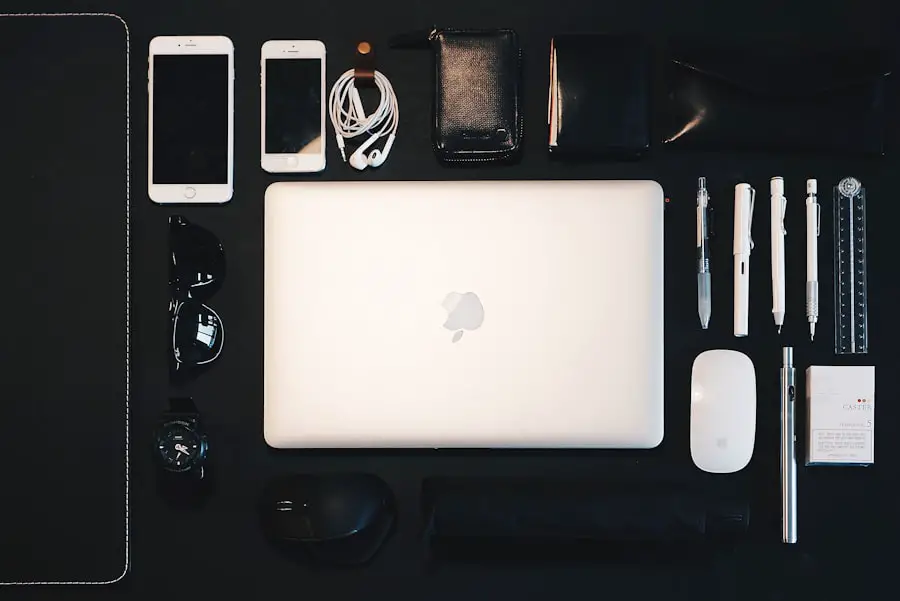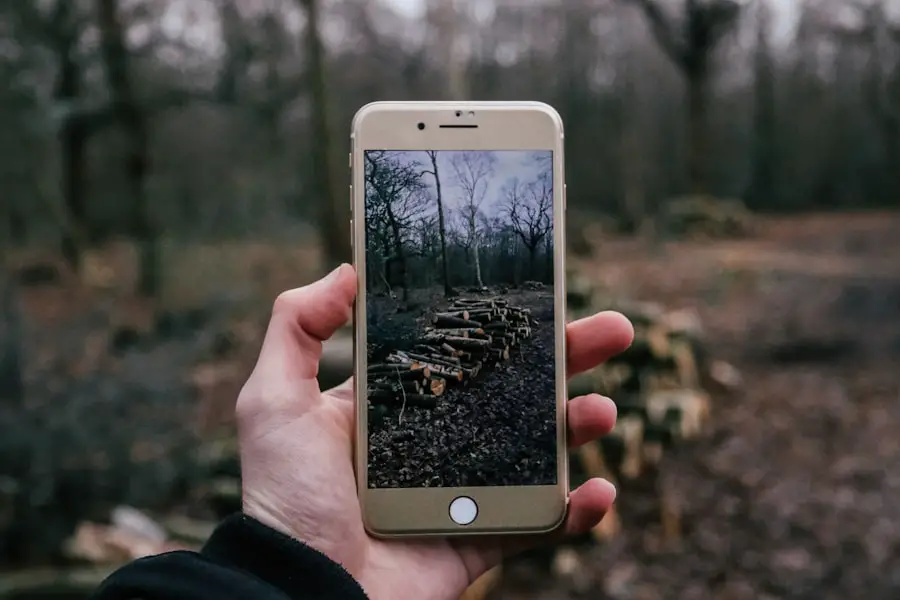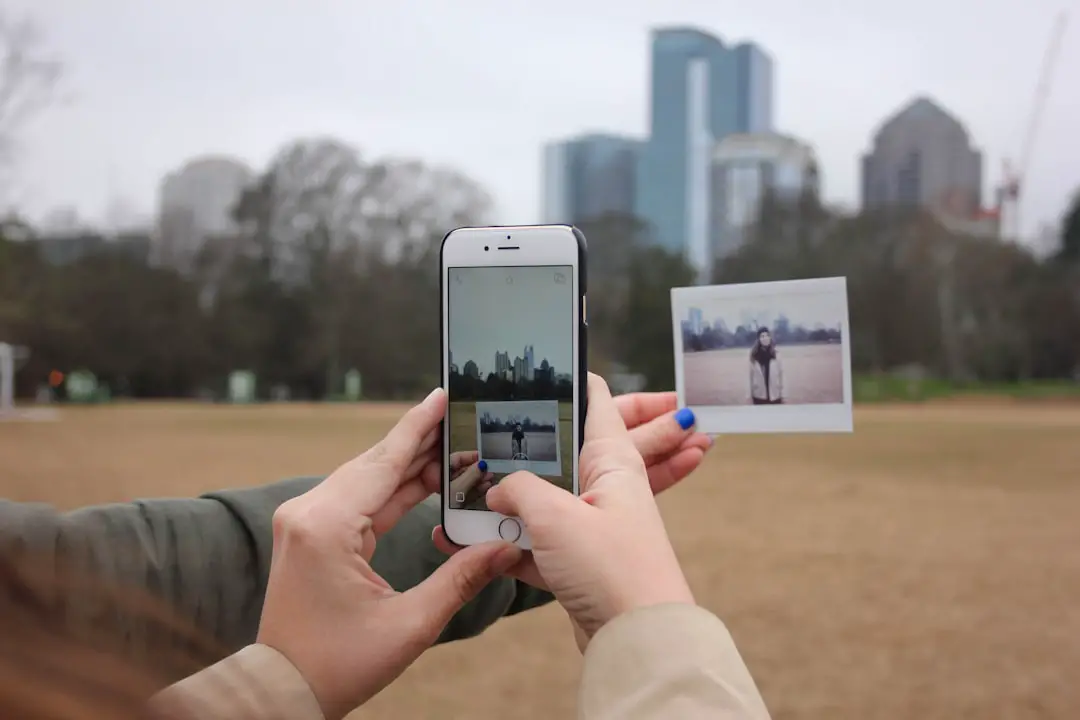When you realize that your iPhone is missing, the initial reaction is often panic. However, it is crucial to remain calm and composed. Panic can cloud your judgment and lead to hasty decisions that may complicate the recovery process.
Take a moment to breathe deeply and gather your thoughts. Assess the situation by retracing your steps. Think about where you last used your phone, whether it was at home, in a café, or during your commute.
This mental exercise can help you determine if the phone might still be in a familiar location. Once you have a clearer picture of where you might have left your device, consider the possibility that it may have been misplaced rather than stolen. Check common areas where you typically place your phone, such as your desk, kitchen counter, or even the pockets of clothing you wore recently.
If you are in a public space, ask staff if anyone has turned in a lost phone. Taking these initial steps can save you time and effort before resorting to more drastic measures.
Key Takeaways
- Stay calm and assess the situation
- Use Find My iPhone to locate your device
- Put your iPhone in Lost Mode
- Contact your service provider to suspend service
- Change your Apple ID and password
Use Find My iPhone to Locate Your Device
If your iPhone remains elusive after your initial search, the next step is to utilize Apple’s built-in feature, Find My iPhone. This tool is invaluable for locating lost devices, provided it was enabled prior to the loss. To access this feature, log into iCloud.com or use the Find My app on another Apple device.
Once logged in, you will see a map displaying the last known location of your iPhone. This can provide critical information about where to search next. In addition to showing the location, Find My iPhone offers several options to help you recover your device.
You can play a sound on your iPhone, which is particularly useful if it’s nearby but hidden under cushions or in a bag. The sound will help you locate it quickly. If the device is not within reach, the map will show its last known location, allowing you to head there and check for it.
This feature not only aids in recovery but also gives you peace of mind by confirming that your device is still powered on and connected to the internet.
Put Your iPhone in Lost Mode

If you are unable to retrieve your iPhone immediately, activating Lost Mode through Find My iPhone is a prudent step. Lost Mode locks your device with a passcode, preventing unauthorized access to your personal information. Additionally, it displays a custom message on the lock screen, which can include your contact information or a note asking anyone who finds it to return it.
This feature serves as both a deterrent for potential thieves and an invitation for good Samaritans to reach out. When Lost Mode is activated, you can also track the location of your device in real-time. This means that if someone finds your phone and connects it to Wi-Fi, you will receive an update on its location.
Furthermore, Lost Mode disables Apple Pay and other sensitive features, ensuring that your financial information remains secure while you work on recovering your device. This added layer of security is essential in today’s digital age, where personal data can be easily exploited.
Contact Your Service Provider to Suspend Service
| Service Provider | Contact Information | Process for Suspending Service |
|---|---|---|
| AT&T | 1-800-331-0500 | Call customer service and request to suspend service |
| Verizon | 1-800-922-0204 | Log in to your account online or call customer service to suspend service |
| T-Mobile | 1-800-937-8997 | Call customer service or visit a store to request suspension of service |
After taking steps to locate your device and secure your data, it is wise to contact your service provider.
Informing them about the loss allows them to suspend service temporarily, preventing unauthorized usage of your account. This is particularly important if you suspect that your phone has been stolen; unauthorized calls or data usage can lead to unexpected charges on your bill.Most service providers have protocols in place for reporting lost or stolen devices. They may require specific information such as your account number, the phone’s IMEI number, and details about when and where the phone was lost. By suspending service promptly, you mitigate the risk of incurring additional costs and protect yourself from potential identity theft that could arise from someone accessing your personal information through the device.
Change Your Apple ID and Password
In addition to suspending service with your provider, changing your Apple ID password is a critical step in safeguarding your personal information. If someone has gained access to your iPhone, they may also have access to your Apple ID account, which includes sensitive data such as emails, contacts, and payment information. By changing your password immediately, you can prevent unauthorized access and protect yourself from potential fraud.
To change your Apple ID password, navigate to the Apple ID account page or use the Settings app on another Apple device. It’s advisable to choose a strong password that combines letters, numbers, and special characters to enhance security. Additionally, consider enabling two-factor authentication if you haven’t already done so.
This adds an extra layer of protection by requiring a verification code sent to another trusted device whenever someone attempts to log into your account.
Report the Loss to Local Authorities

If you believe that your iPhone has been stolen rather than simply misplaced, reporting the loss to local authorities is an essential step. File a police report detailing the circumstances surrounding the theft, including when and where it occurred and any identifying information about the device such as its serial number or IMEI number. Having an official report can be beneficial for insurance claims or if you need to provide proof of theft later on.
When reporting the theft, be prepared to provide as much information as possible. This may include receipts for the purchase of the device or any previous correspondence with your service provider regarding the loss. While police may not always be able to recover stolen devices, having a report on file can increase the chances of recovery if someone attempts to sell or use the phone.
Consider Using a Third-Party Lost Phone Recovery Service
In addition to using Apple’s built-in features and reporting the loss to authorities, exploring third-party lost phone recovery services can be beneficial. These services often employ advanced tracking technology that may provide additional options for locating your device beyond what Find My iPhone offers. Some services specialize in recovering stolen devices by monitoring online marketplaces where stolen phones are frequently sold.
Before engaging with any third-party service, conduct thorough research to ensure their legitimacy and effectiveness. Look for reviews from other users who have successfully recovered their devices through these services. While some may charge fees for their assistance, others may offer free trials or basic services at no cost.
Weighing these options can help you decide whether this route is worth pursuing in conjunction with other recovery efforts.
Notify Your Contacts and Social Media Networks
Once you’ve taken steps to secure your device and personal information, it’s important to notify your contacts about the situation. Informing friends and family can help prevent misunderstandings if they receive unusual messages or calls from what appears to be your number. Additionally, if someone gains access to your social media accounts through your lost phone, they could potentially impersonate you or spread misinformation.
Consider posting an update on social media platforms explaining that your phone has been lost or stolen and advising people not to engage with any suspicious messages coming from your account until further notice. This proactive approach helps protect not only yourself but also those in your network from potential scams or phishing attempts that could arise from unauthorized access.
Backup and Wipe Your Data Remotely
If recovery of your iPhone seems unlikely after exhausting all options, backing up and wiping your data remotely becomes imperative. Using Find My iPhone, you can initiate a remote wipe of all data stored on the device. This action ensures that sensitive information such as photos, contacts, and financial details are deleted permanently from the phone, reducing the risk of identity theft or data breaches.
Before performing a remote wipe, ensure that you have backed up any important data that may not be stored elsewhere. If you have been using iCloud for backups regularly, most of your data should already be secure in the cloud. However, if there are recent changes or new files that haven’t been backed up yet, consider using another Apple device or computer to save those files before proceeding with the wipe.
Consider Remote Locking Your Device
In addition to wiping data remotely, consider locking your device if it hasn’t already been done through Lost Mode. Remote locking prevents anyone from accessing the phone without entering a passcode that only you know. This feature is particularly useful if you suspect that someone may attempt to use or sell your device without authorization.
Locking your device also serves as an additional deterrent against theft; potential thieves are less likely to target a locked phone since it requires specific credentials for access. If you manage to recover your device later on, unlocking it will be straightforward as long as you remember your passcode.
Take Steps to Prevent Future Loss or Theft
Once you’ve navigated through the distressing experience of losing an iPhone, it’s essential to take proactive measures to prevent future occurrences. Start by ensuring that Find My iPhone is enabled on all devices moving forward; this feature is invaluable for tracking lost devices quickly and efficiently. Additionally, consider investing in accessories such as phone cases with built-in tracking technology or keychain trackers that can help locate devices more easily.
Another effective strategy is developing habits that minimize the risk of loss or theft in everyday situations. For instance, always designate a specific spot for placing your phone when at home or in public spaces; this reduces the likelihood of misplacing it during busy moments. When out in public areas like cafes or public transport, remain vigilant about keeping an eye on personal belongings and avoid leaving devices unattended on tables or counters.
By implementing these strategies and remaining aware of potential risks associated with mobile device ownership, you can significantly reduce the chances of experiencing similar distressing situations in the future while enjoying the convenience that smartphones offer in daily life.
If you have lost your iPhone, it can be a stressful situation. However, there are steps you can take to try and locate it or protect your personal information. One helpful resource is the article on getiphoneinfo.com which provides information on what to do when you lose your iPhone. This article offers tips on using Find My iPhone, contacting your service provider, and protecting your data. It is important to act quickly and follow the necessary steps to increase the chances of recovering your lost device.
FAQs
What should I do if I lose my iPhone?
If you lose your iPhone, the first thing you should do is try to locate it using the “Find My” app or website. If you are unable to locate it, you should take steps to protect your personal information and report the loss to your mobile carrier and local authorities.
How can I locate my lost iPhone?
You can use the “Find My” app on another Apple device or the iCloud website to locate your lost iPhone. This feature allows you to track the location of your device, play a sound to help you find it, or remotely lock or erase it to protect your data.
What should I do to protect my personal information if I lose my iPhone?
If you lose your iPhone, you should remotely lock or erase it using the “Find My” app or website to protect your personal information. You should also change the passwords for any accounts that were logged into on the lost device.
Should I report the loss of my iPhone to my mobile carrier?
Yes, you should report the loss of your iPhone to your mobile carrier as soon as possible. They can deactivate the SIM card to prevent unauthorized use of your phone number and may be able to help you with options for replacing your device.
Should I report the loss of my iPhone to the local authorities?
Reporting the loss of your iPhone to the local authorities is a good idea, especially if you believe it was stolen. They may be able to help you recover your device and can provide documentation of the loss for insurance purposes.










